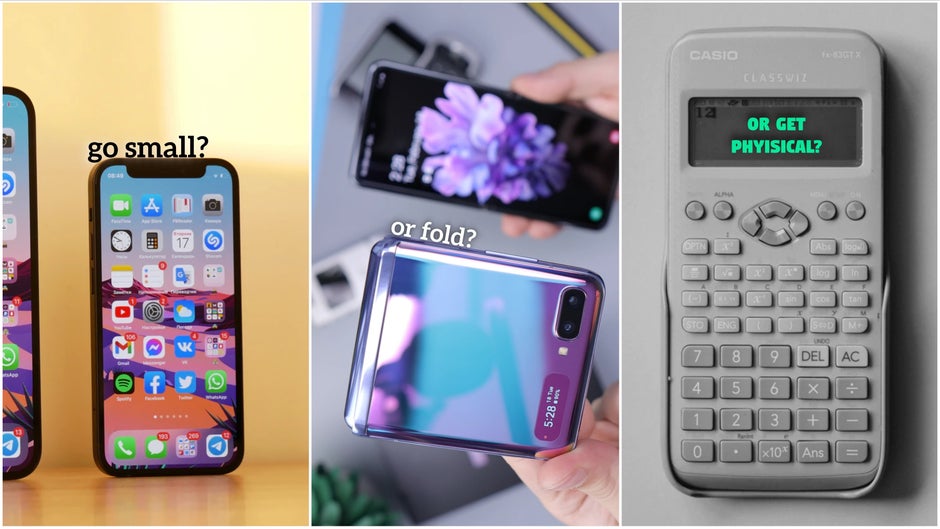How to deal with smartphone addiction, and what is nomophobia? An unconventional take
As for phone-makers – it’s an opportunity for them to sell their product, keep you coming back to it, buy the new model, buy their subscription service, buy accessories, etc.
If you’re subscribed to Apple TV and Spotify, they won’t worry about how often you use your account as long as the direct debit keeps coming through on their end, right? And if you buy a Pixel, Google won’t be too bothered about how long you decide to keep it, as long as you keep sharing your data with the tech giant – that’s a topic for a whole other story.
You can take control: Dealing with smartphone dependency
There’s popular advice on the topic, but the problem is that it often shows you the direction, but doesn’t show you the way.
Yes, there are many tools, tips, and tricks that can help you take control of your smartphone dependency. The advantage a tech website (or tech writer) has when discussing this topic is that we know a lot about smartphones. That’s not meant to come across as a “flex”.
Sometimes it’s the less obvious patterns of consumption, sales, or sheer frustration that open your eyes for what’s otherwise tricky to comprehend.
Some traditional advice on dealing with smartphone addiction might be:
- Make some friends and hang out with them.
- Talk to your siblings / Strike conversations with strangers
- Have a designated bedtime, and don’t use your phone before going to sleep
- Turn off notifications
- Delete certain social media apps (also known as the “no social media challenge”)
Those are great, but… What if you’re in the midst of a global pandemic and you can’t meet up with people; you don’t have siblings; you are an introvert who isn’t likely to start a conversation; you use your phone as an alarm clock; your work is related to social media?
Then you’d like to take a slightly different approach. We’ll go through a few separate sections of tips, but let’s start with your smartphone settings.
Apple iPhone & iOS: Screen Time
You might not know it, but most modern phones nowadays have dedicated software designed to help you deal with smartphone overuse. For example, for Apple products, that would be the Screen Time option in your settings, which lets you set:
- Downtime
- App Limits
- Communication Limits
Downtime lets you schedule time away from the screen. You set it up, and five minutes before the time comes, a reminder appears to let you know. When downtime is on, only apps that you choose to allow and phone calls will be available. Also, you can set the same downtime for every day or customize your days in case you want a different setting for the weekend, for example.
App Limits let you, well… set certain daily app limits, like 30 minutes of Facebook, 1 hour of Instagram, and 15 minutes of adult… meditation apps!
Communication Limits are similar to app limits, except they apply to Phone, FaceTime, Messeges etc. That’s for those who talk too much on the phone. That might be a whole different problem.
Android: Digital Wellbeing / Digital Balance
Similar to Screen Time on iPhone, Digital Wellbeing or Digital Balance (in the case of Huawei) will let you see your smartphone usage stats and manage your screen time with App limits and Away time.
It’s worth exploring those on your own device. Taking advantage of this feature or even set it up on your children’s smartphones can go a long way, as long as you don’t start bypassing it.
Unconventional addictions call for unconventional solutions

Take a shortcut.
1. Think about switching to a phone with a smaller screen (and a smaller battery)
Now, again – this one might not seem like a direct attempt to tackle the issue, but from personal experience is the single best thing one can do in order to start using their smartphone less. A perfect example for this will be my particular case, which goes like this:
I’ve had the Huawei P30 Pro for about two years now. It’s the absolute best phone I’ve ever owned by a long shot. It takes stunning photos, it’s fast even after two years of use, and it comes with all the bells and whistles that one might want.
Typing on the 6.5-inch display is a joy. I generally find that typing on an Android phone has always been a more seamless experience for me. I don’t know if anyone else can relate, but I type faster and more accurately with fewer typos on an Android phone with a 6-6.5-inch display than an iPhone (even if it has a bigger screen).
However… I figured that I also want (not need!) an iPhone since I’ve always been nosy and wanted to know “what the other OS is doing”. That’s long before I took on tech journalism. My computer is a MacBook, so that’s another good reason – you know AirDrop and stuff…
So, I bought a used iPhone 8 off eBay, which came with lots of scratches on the screen, poor battery life (as expected), and plenty of storage (256GB), which was welcome. I switched my SIM to the iPhone many months ago, and to this day, it hasn’t gone back to the P30 Pro because (now I’ll make a parallel to the things I loved about the Huawei phone):
- The iPhone took usable but not amazing photos
- It’s smooth, but not necessarily fast compared to the newer Android flagship
- Apple’s phone doesn’t have any gimmicks that might be useful in certain scenarios, but normally a distraction
- It has a small screen, which is usable with one-hand
- This small screen is really discouraging when you want to type an email or a longer message
- The iPhone 8 dies after about three hours of active use
- It takes forever to charge
If this was a 2017 review, such findings would get the iPhone 8 canceled, but at this moment in time and for the purpose of dealing with smartphone dependency, that’s exactly what makes a phone like the iPhone 8 a brilliant tool for dealing with my, or your smartphone addiction.
Unlike some of the studies that are sometimes vague or the general advice that’s often too radical, this is something everyone can do! For the record, I’m not saying everyone should go out and buy the old iPhone 8 or even the iPhone 12 Mini. That’s what worked for me, but for you, this might be another small phone which might sometimes be successfully frustrating to use.
But that’s the idea – you have to want to use your phone less, and trust me – typing on such a small screen is indeed frustrating; the battery life is poor compared to bigger phones, and it discourages you from consuming any type of content – YouTube videos, photo/video editing, or especially watching Netflix or Prime movies. It’s absolutely perfect for those who want to force themselves into using their smartphone less!
Phones like the Huawei P30 Pro, Galaxy S21 Ultra, or iPhone 12 Pro Max would be very capable and practically perfect for things like taking pictures, viewing content, and perhaps even being productive. That’s exactly why you might want to avoid them if you tend to get lost in your phone (not taking shots at any companies or models).
Now, if I want to watch a long YouTube video or a documentary, I turn on the TV. Chromecast is brilliant if your TV isn’t smart. Then, if I want to type a work email, I reach for my MacBook. Tablets are another great smartphone alternative for multimedia consumption, but be careful – you don’t want to transform your smartphone addiction into a tablet addiction.
Also, if you’re worried about being disconnected with no means of reaching anyone you really need (when you really need to)…get a dumbphone to keep with you in case your small smartphone dies.

And a full battery…
How about you buy a small calculator, a pocket calendar, a tiny torch or a compass?
Yes, this might sound negligible, but think about it – how many times do you grab your phone to do something simple like checking the time or see the date, and you end up watching baby videos on YouTube? I bet at least once a day. That’s 365 times a year. And, let’s be honest, it’s really much more…
Why not buy a watch (whether it’s smart or traditional); get a fitness tracker; try taking notes on a notepad… You get the point.
3. Get a foldable smartphone (the ones that can become smaller… not bigger)
And in the end, foldable clamshell phones, which are on the rise, literally hide the big and beautiful display that, with traditional phones, is always there to distract you. I have personally explored this topic in more detail in the recent “Why I might ditch my iPhone for a Galaxy Z Flip 3” story.
It also touches on the very interesting topic of productivity, and how your phone can make you less, or more productive, depending on your lifestyle. I encourage you to take a look at it.
Hey, perhaps… not on your phone? Get your laptop instead. It’s a long piece…
For all the latest Technology News Click Here
For the latest news and updates, follow us on Google News.
